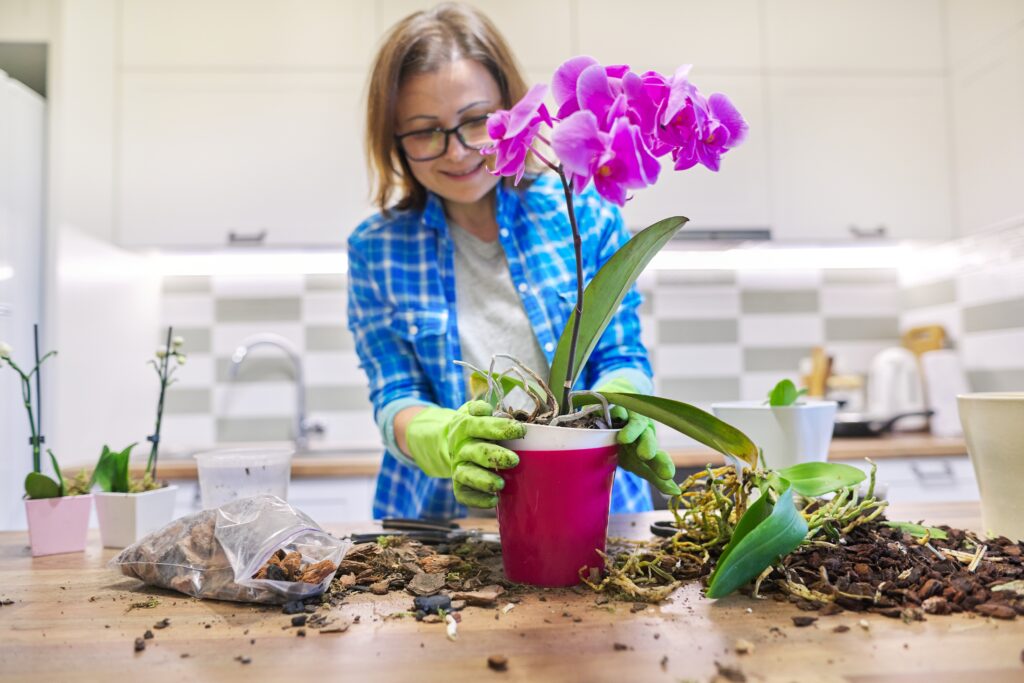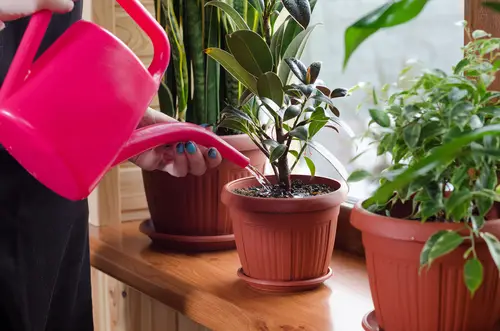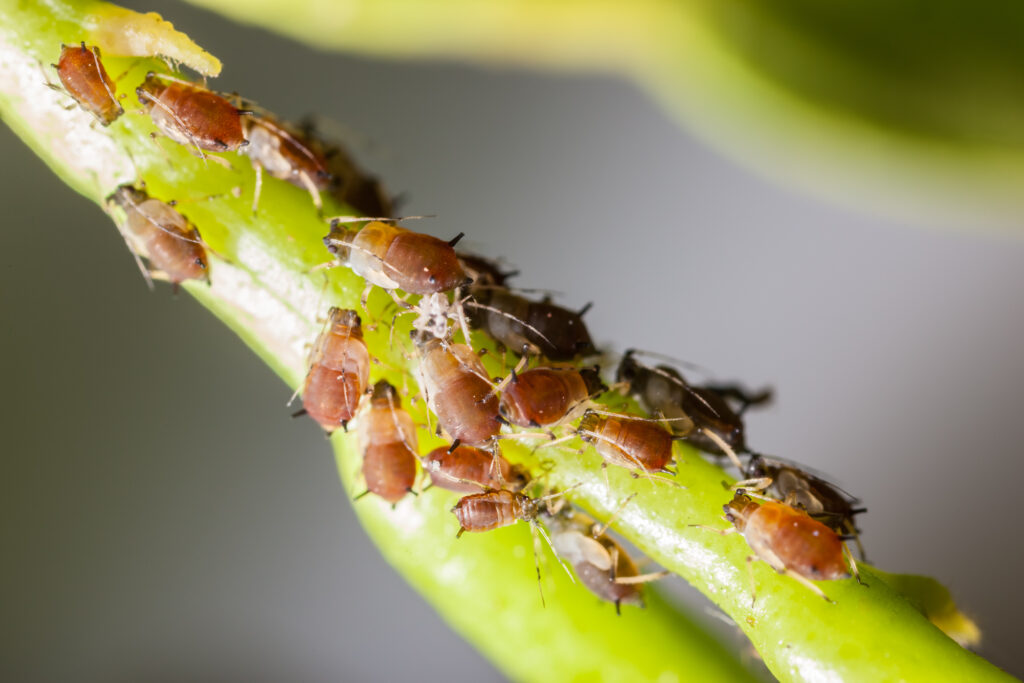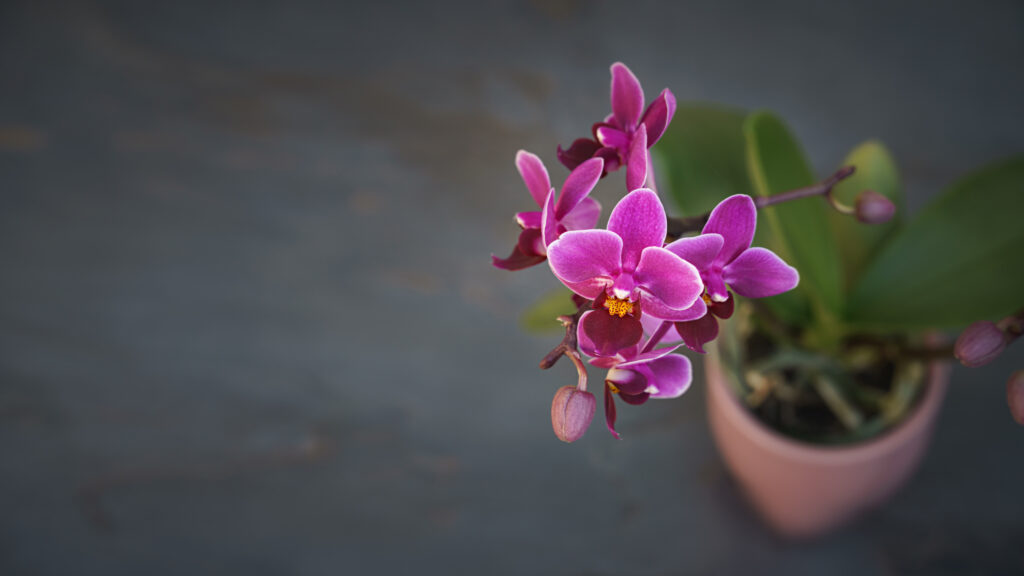Orchids are one of the most popular houseplants because of their stunning blooms and unique appearance. However, when the branches of an orchid start turning brown, it can be a cause for concern.
Orchid branches turning brown can indicate a problem with the plant’s health, and it’s essential to identify the cause and take appropriate measures to restore the plant’s health.
Understanding orchids is crucial to identify the cause of brown branches. Orchids require specific growing conditions, and any deviation from these conditions can affect their health.
Light, temperature, humidity, watering, and fertilizing are all factors that can impact an orchid’s health. When an orchid’s branches start turning brown, it’s essential to evaluate the plant’s growing conditions and identify any stressors that may be causing the problem.
Key Takeaways on Orchid Branches Turning Brown
- Orchids require specific growing conditions, and any deviation from these conditions can affect their health.
- Brown stems or branches can indicate a problem with the plant’s health, and it’s essential to identify the cause and take appropriate measures to restore the plant’s health.
- Evaluating the plant’s growing conditions and identifying any stressors that may be causing the problem is essential to restore the health of an orchid with brown branches.
Other popular picks in this category:
Understanding Orchids

Orchids are beautiful and unique houseplants that require special care to thrive. These plants are known for their delicate and intricate flowers that come in a variety of colors and shapes. Orchids are popular among houseplant enthusiasts and orchid growers alike, but they can be challenging to care for.
There are many different varieties of orchids, each with its own set of care requirements. Some orchids prefer bright, indirect light while others thrive in low light conditions. Understanding the specific needs of your orchid is crucial to its health and longevity.
One of the most common issues that orchid growers face is the browning of orchid branches. There are a variety of factors that can cause orchid branches to turn brown, including overwatering, underwatering, exposure to extreme temperatures, and fungal infections.
To prevent orchid branches from turning brown, it is important to provide your orchid with the proper care. This includes watering your orchid correctly, providing it with the right amount of light, and fertilizing it on a regular basis.
Why Are Orchid Branches Turning Brown
Orchids are known for their delicate beauty and vibrant colors, but sometimes their branches can turn brown, which can be concerning for orchid enthusiasts. There are several possible causes of brown orchid branches, and understanding them can help you take the necessary steps to address the issue.
One of the most common reasons for brown orchid branches is improper watering. Overwatering or underwatering can both lead to brown stems or leaves.
When orchids are overwatered, their roots can become waterlogged, leading to root rot, which can spread to the rest of the plant. On the other hand, underwatering can cause the orchid to dry out, leading to brown leaves and stems.
Another possible cause of brown orchid branches is sunburn. Orchids require bright, indirect light, but too much direct sunlight can cause the leaves and stems to turn brown. This is especially true for orchids that are used to lower light levels, such as Phalaenopsis orchids.
In some cases, brown orchid branches can be a sign of disease or pest infestation. For example, a fungal infection can cause brown spots or discoloration on the leaves and stems, while spider mites can cause brown tips or spots.
If you notice brown orchid branches, it’s important to take action to address the issue. This may involve adjusting your watering schedule, moving the orchid to a different location with less direct sunlight, or treating the plant for pests or disease.
Role of Light and Temperature

Orchids require the right amount of light and temperature to thrive. Light is essential for photosynthesis, while temperature plays a crucial role in the growth and development of orchids.
Light
Orchids need enough light to grow and produce flowers, but they can also get sunburned if exposed to direct sunlight for too long. Indirect light is the ideal amount for orchids, which can be achieved by placing them near a window with a sheer curtain.
If the orchid is not getting enough light, the leaves may turn yellow or brown. On the other hand, if the orchid is getting too much light, the leaves may turn white or brown. It is essential to monitor the orchid’s light exposure and adjust accordingly.
Temperature
Temperature changes can also affect the health of orchids. They require a consistent temperature between 65-85°F to grow and bloom. Exposure to cold temperatures can damage the orchid’s leaves and cause them to turn brown.
Orchids should be kept away from cold drafts or air conditioning vents. If the orchid is exposed to cold temperatures, it may need to be moved to a warmer location to recover.
Watering and Overwatering Concerns

Orchids are sensitive to watering and overwatering, which can cause the branches to turn brown. Proper watering is essential to keep the orchid healthy and vibrant. Overwatering, on the other hand, can lead to root rot, which is a common problem for orchids.
When watering an orchid, it is crucial to ensure that the potting mix is completely dry before watering again. Overwatering an orchid can cause the roots to become waterlogged, which can lead to root rot. Signs of overwatering include brown, mushy roots, and wilting leaves.
To avoid overwatering, it is essential to water the orchid correctly. The best way to water an orchid is to wait until the potting mix is almost dry before watering again. The frequency of watering depends on the type of orchid, the potting mix, and the environment. In general, orchids need to be watered about once a week.
It is also crucial to ensure that the orchid is planted in a well-draining potting mix. This will help prevent water from accumulating around the roots, which can lead to root rot.
In addition to overwatering, dehydration can also cause the branches of an orchid to turn brown. Dehydration occurs when the orchid is not watered enough, or the humidity levels are too low. Signs of dehydration include wilted leaves and dry potting mix.
To prevent dehydration, it is essential to water the orchid regularly and maintain a humid environment. The ideal humidity level for orchids is between 40% and 60%. If the humidity level is too low, you can increase it by placing a tray of water near the orchid or using a humidifier.
Fertilizing and Repotting
Fertilizing and repotting are both important aspects of taking care of orchids. Fertilizing helps provide the necessary nutrients for the plant to grow and thrive, while repotting ensures the orchid has enough space to grow and proper drainage to prevent root rot.
When it comes to fertilizing orchids, it’s important to use a fertilizer specifically designed for orchids. These fertilizers typically have a higher ratio of phosphorus, which is essential for flower growth.
It’s recommended to fertilize orchids regularly, usually every two weeks during the growing season and once a month during the dormant season.
When repotting orchids, it’s important to use a well-draining mix to ensure proper drainage. Orchids should only be repotted when necessary, usually every one to two years or when the potting mix starts to break down. During repotting, it’s important to inspect the roots and remove any dead or rotting roots.
It’s also important to choose the right size pot when repotting. Orchids prefer to be slightly root-bound, so it’s recommended to choose a pot that is only slightly larger than the previous pot. This will prevent the orchid from becoming overwatered and promote healthy root growth.
Disease and Pest Management

When orchid branches turn brown, it could be a sign of a disease or pest infestation. To manage these issues, it is important to take a proactive approach to prevent the spread of pathogens and pests.
Fungal Infections
Fungal diseases like black rot can quickly spread to other parts of the plant and other plants nearby. To prevent the spread of fungal infections, it is important to remove any affected plant parts and treat the plant with a fungicide.
Fungicides can be found at most garden centers and should be applied according to the instructions on the label.
Root Rot
Root rot is a common problem in orchids that can cause branches to turn brown and die. To prevent root rot, it is important to ensure that the orchid is not overwatered and that the pot has adequate drainage. If root rot is suspected, the plant should be repotted in fresh, well-draining soil.
Pests
Pests like aphids, thrips, mealybugs, ants, mites, and scale can all cause damage to orchids and should be managed as soon as they are detected. One effective way to manage pests is to use isopropyl alcohol to clean the affected area. This will kill the pests and prevent them from spreading to other parts of the plant.
Prevention
Prevention is the best way to manage pests and diseases in orchids. Keeping the plant healthy by providing adequate water, light, and nutrients will help prevent issues from arising. It is also important to regularly inspect the plant for signs of pests or disease and take action immediately if any issues are detected.
Other Factors Affecting Plant Health

In addition to brown orchid stems, there are many other factors that can affect the overall health of an orchid plant. Proper care and maintenance can help prevent many of these issues from occurring.
One important factor to consider is the plant’s growing conditions. Orchids thrive in warm and humid environments, so it is important to provide adequate space and proper humidity levels.
Low humidity can cause orchid leaves to become brittle and dry, while high humidity can lead to fungal growth and other issues. Gardeners should also be mindful of the amount of light their orchids receive, as too much or too little can cause problems.
Another factor to consider is proper watering and drainage. Orchids should be watered regularly, but over-watering can lead to root rot and other issues.
It is important to ensure that the plant has proper drainage and that excess water is able to drain away from the roots. Under-watering can also cause issues, such as wilting and yellowing leaves.
Nutrient deficiencies can also cause orchids to become unhealthy. Fertilized regularly can help ensure that the plant has the proper nutrients it needs to thrive. Gardeners should also be aware of any potential toxic substances that may be present in their orchid’s environment, such as insecticides or other chemicals.
Temperature is another important factor to consider. Cold damage can cause orchid leaves to turn brown and mushy, while warmth can help promote regrowth and rebloom. It is important to keep the plant in a warm, stable environment to prevent damage.
Insects and other pests can also cause damage to orchids. Gardeners should be aware of any signs of infestation, such as yellowing leaves or holes in the stem. Misting the plant can help prevent insect infestations, as can proper pruning and maintenance.
Frequently Asked Questions
What causes orchid stems to turn brown?
Orchid stems can turn brown due to a variety of reasons, including overwatering, underwatering, lack of proper lighting, extreme temperature conditions, and nutrient deficiencies. Brown stems could also be a sign of stem rot caused by fungal or bacterial infections.
Should you cut dead branches off an orchid?
If a branch is completely dead, it should be cut off at the base to prevent the spread of infection. However, if there are still some green leaves or roots on the branch, it may be possible to save it by addressing the underlying issue causing the browning.
What to do with a dying orchid branch?
If a branch is dying, it is important to identify the cause of the problem. Common causes include overwatering, underwatering, and nutrient deficiencies. Once the underlying issue is addressed, the branch may recover. If the branch is completely dead, it should be removed to prevent the spread of infection.
Can orchids recover from stem rot?
Orchids can recover from stem rot if the infection is caught early and treated promptly. The infected area should be cut off, and the orchid should be treated with a fungicide or bactericide to prevent further spread of the infection.
How to regrow an orchid stem?
To regrow an orchid stem, it is important to provide the plant with proper care, including adequate watering, proper lighting, and nutrient-rich soil. It may also be helpful to use a rooting hormone to encourage new growth.
Orchid flower spike turning brown?
If an orchid flower spike is turning brown, it could be a natural part of the plant’s life cycle, or it could be a sign of an underlying issue. Common causes of brown flower spikes include overwatering, underwatering, and nutrient deficiencies. If the issue is addressed promptly, the orchid may recover and produce new flower spikes.

Hey, I’m Lisa and I’ve been an avid gardener for over 30 years. I love writing, talking and living in the garden! Feel free to connect with me on my socials below


